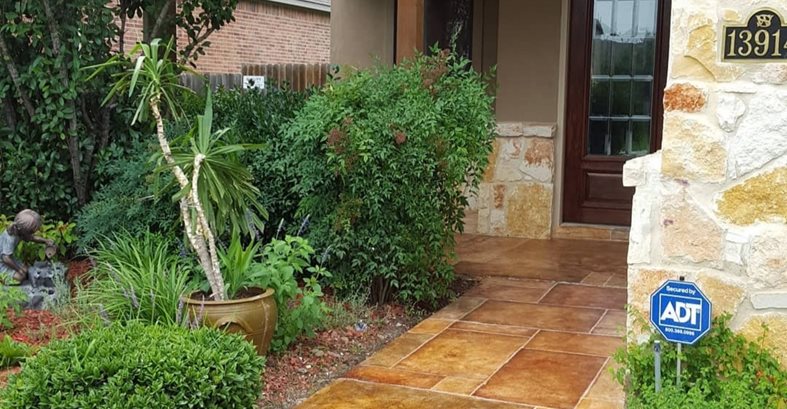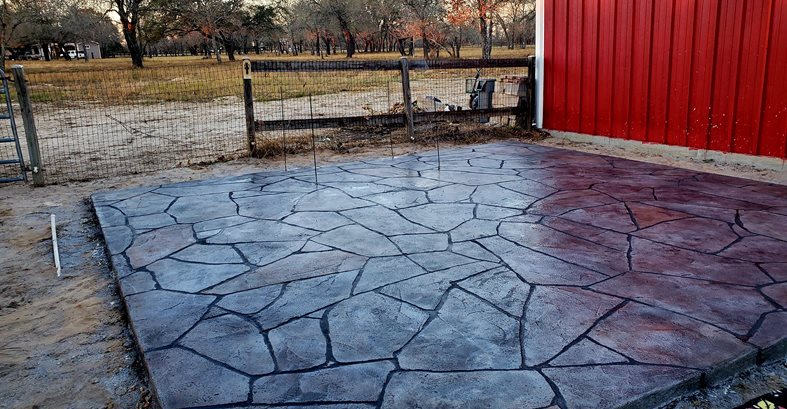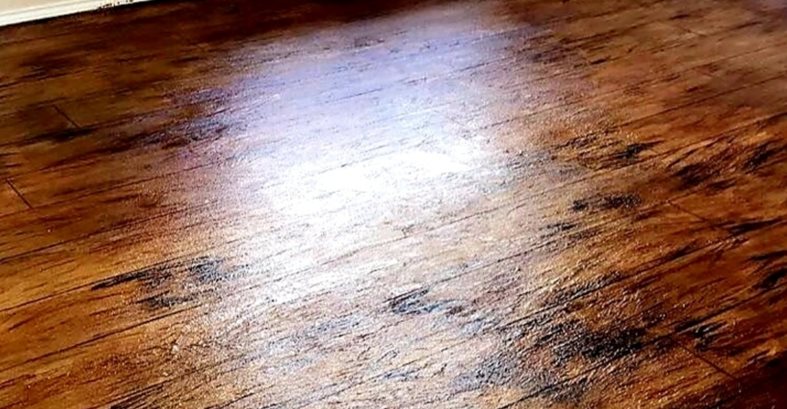Some of the best work we’ve featured on The Concrete Network are projects completed by contractors who view concrete as more than just a functional surface, but also as an art form, using it as a canvas to showcase their creativity. That is certainly the approach taken by Rene Ramirez, owner of Decorative Concrete Masters in Schertz, Texas. A portrait artist and muralist, Ramirez began applying his talents to concrete faux finishing work 10 years ago and now specializes in hand-carved concrete overlays that replicate flagstone, wood planking, and other natural materials.
“When I started in decorative concrete, I was approached by a concrete contractor that hired me to teach me the art of carving on concrete overlays, but I parted ways because their stuff never looked real,” says Ramirez. “To create a true faux finish, or trompe l’oeil, you have to think about what you’re trying to replicate. When I do a faux finish wood floor, for example, I think about how long the floor has been there, how many boards have been replaced, and how much wear and tear it has received. When you create this picture in your mind, you can then create what the mind holds.”
Ramirez says that the first and most important part in creating an aesthetically pleasing concrete overlay is proper surface preparation.“A true artisan is always pleased to tackle this part. It doesn’t matter how beautiful your finished overlay is, it’s going to fail if you did not prepare your surface the right way.”
Ramirez typically starts by grinding the existing concrete followed by pressure washing. “I find that grinding is always the best method for opening the pores in the concrete and eliminating as much dirt as possible, then I pressure wash and degrease using a simple mixture of Dawn Ultra Platinum dish soap and water. It's a wonderful cleaning method and very cost-efficient and environmentally friendly,” he says.
Ramirez never uses concrete stamps or texturing mats to create his stone or wood patterns. Instead, he relies on simple hand tools and his artistic skill to achieve the stunningly realistic results you see here. Everything is custom done to the client's specifications, and there is no repetition in pattern. Every stone or wood plank is unique.
“When I think of carving, I think about it in this sense. The stones are there already and it's my job to remove the parts you don’t need in order to reveal them,” says Ramirez.
The overlay material Ramirez uses for both his indoor and outdoor projects is Austin Stone from Concrete Colors of Texas, a polymer-modified cement-based overlay product specifically designed for hand carving. After placing the overlay, he finishes the surface using a pool trowel and carves the designs using only a scoring knife and a T-square. Although the carving process is more time-intensive than stamping (most of his projects take three to five days to complete), the level of detail is more intricate and authentic.
To color his overlays, Ramirez starts by adding a light integral pigment to the overlay itself, and then adds highlights and lowlights using topically applied pigments. “My coloring method is really very simple,” he says. “It’s not a layering technique. I apply the color using a sprayer and a sponge and dilute it as needed to create realistic antiquing effects.”
As a final word of advice, Ramirez recommends that concrete artisans become constant students of their industry. “You have to study your surroundings. I research a lot, and I’ve discovered that nature is your best teacher.”
Concrete Contractor
Rene J. Ramirez
Decorative Concrete Masters, Schertz, Texas
210-722-8301
RELATED:
See more concrete projects that replicate wood.
Flagstone Stamped Concrete Is an Affordable Alternative to Real Stone
Get more overlay design ideas


